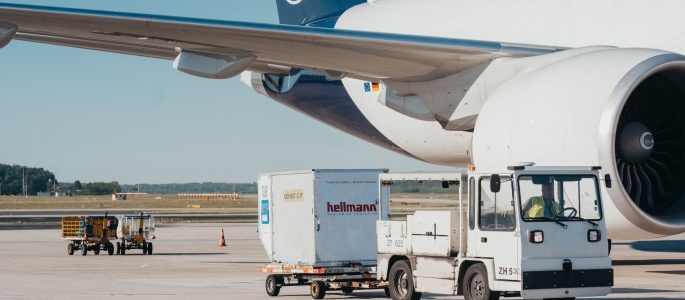
USMCA Trade Agreement to Take Effect
On July 1, 2020, the new US-Mexico-Canada Trade Agreement (USMCA) will be effective. After Canada and Mexico had taken steps to comply with their prior commitments under the new Trade Agreement in April 2020, the US followed that notification by advising Mexico and Canada that, the US, too, had completed its procedures to implement the agreement, which was the final step necessary to put the USMCA into force. Hellmann is here to help you navigate through the changes that come with the Trade Agreement!
According to the US Trade Representative (USTR), Robert Lighthizer: “The crisis and recovery from the Covid-19 pandemic demonstrates that now, more than ever, the United States should strive to increase manufacturing capacity and investment in North America. The USMCA’s entry into force is a landmark achievement in that effort. Under President Trump’s leadership, the USTR will continue working to ensure a smooth implementation of the USMCA so that American workers and businesses can enjoy the benefits of the new agreement”. Critical new guidelines released by US Customs and Border Protection include:
- Country of origin marking rules for goods imported from both Mexico and Canada
- Allowing importers to make “Post-importation claims of preferential origin” (excludes refunds of Merchandise Processing Fees)
- List of Harmonized Tariff Schedule numbers at the 6-digit level (subject to revision) for which the steel and aluminum purchasing requirements will apply
- Automotive-specific rules of origin
- Procedures for automotive producers to submit petitions for “Rules of Origin” and “Staging Regime” (SR) or “Alternative Staging Regime” (ASR)
- While producers of heavy trucks and other vehicles have “Rules of Origin” (ROO) and other “Regional Value Content” (RVC), they may also request the ASR through a petition process
What has changed between NATFTA and USMCA?
Changes to the free trade agreement are largely centered around automotive, dairy, egg and poultry industries as well as steel and aluminum tariffs:
- Percentages of RVC for automobiles will increase from 62.5% under NAFTA to 75% over a phase-in period
- Change in rules of origin for pharmaceuticals and healthcare products, cosmetics and chemicals
- Change in Certificate of Origin rules: under USMCA, formal certification documents are no longer required, however, previous NAFTA certificates and certification documents under USMCA must be retained for five years
- Section 232 tariffs on Steel & Aluminum could be applied at the discretion of the USA
- Change of De Minimis rules
- Dispute Resolution changes by eliminating NAFTA Chapter 11
- Intellectual property changes including updates to patents and copyright rules
- Sunset clause: the USMCA will remain in effect for 16 years but after 6 years, the sunset term can be re-visited
Hellmann is here to help you navigate through these changes! If you need assistance to assess your readiness for the new USMCA, we are here to support you. Our dedicated team of professionals in the USA and Canada can analyze your trade data to assess your current NAFTA business and determine how the new USMCA will impact rules of origin, product-specific rules, identify potential savings, identify possible changes to your internal processes and establish a blueprint to support your business model and workflow. We can also help you create a plan to develop the tools to qualify goods, assess duties, origin and value as well as HTS classification and secure certificates of origin.
Update:
The US Customs and Border Protection (CBP) launches the United States-Mexico-Canada Center to coordinate the implementation of the USMCA for July 1, 2020 trade pact commencement. Details are available under the following link: https://www.cbp.gov/newsroom/national-media-release/cbp-launches-united-states-mexico-canada-center-coordinate.
In addition to the “Center”, CBP will host a series of technical support calls which are listed in CSMS # 42997754.
For more information, please contact:
USA: Frank Asta
Canada: Roger Morton




